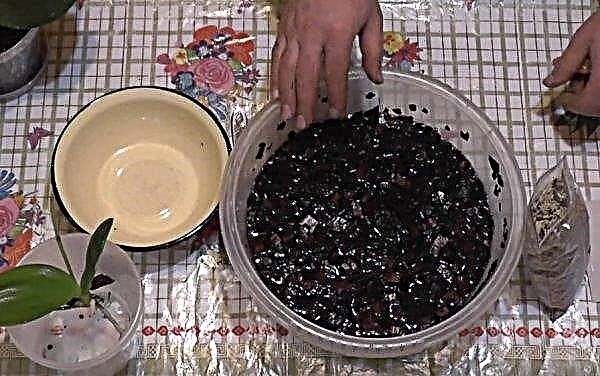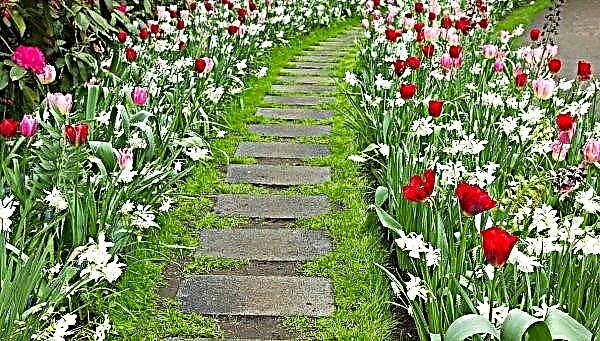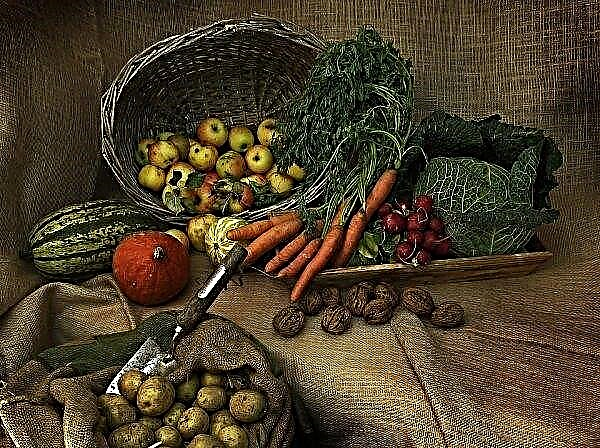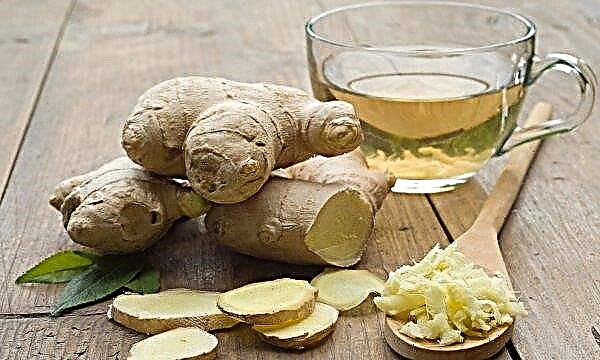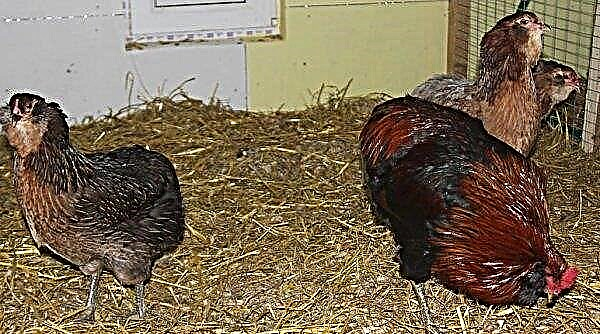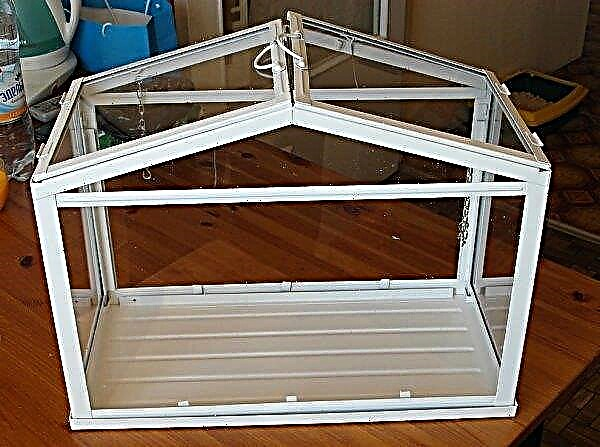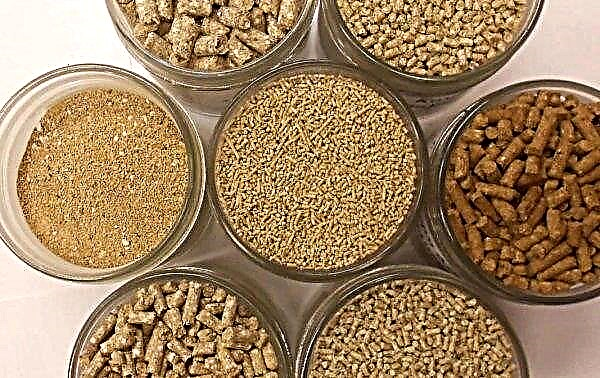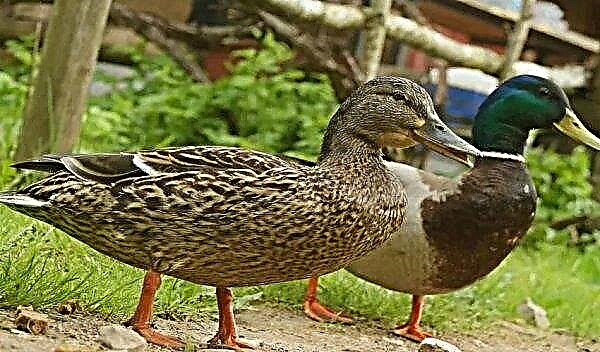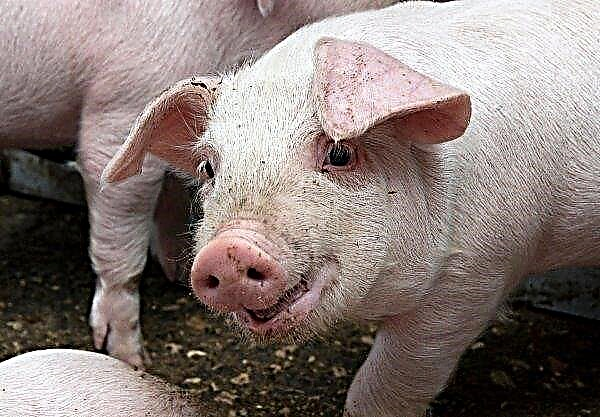Despite the fact that the bees have spread throughout the climatic zones of the globe, it is still not easy for them to survive the frosty winters, therefore, when breeding these insects, you need to think in advance how they will winter. The best solution to the problem is warming the hives. How to do this better, we will consider in our article.
Why is hive insulated?
Bees can tolerate temperatures in the range –40 ... + 40 ° С. However, for normal life (feeding, reproduction) they need a temperature of +10 to + 30 ° C. With any change in indicators, they try to resolve them. By nature, bees are designed so that they can independently warm or cool themselves. Because of this, for many, the issue of warming the hive becomes incomprehensible.
Yes, if the family is not weak, then it is able to independently heat itself, but in order to generate the right amount of heat, insects spend their life energy, the reserves of which are replenished through food. It turns out that the more heat they need to release, the more they must absorb food - honey, whose reserves are limited, and it is impossible to replenish them before spring. If food supplies are used up earlier than spring, the bee family may die, so the hives need to be warmed so that little toilers use less energy to maintain a comfortable temperature.
If food supplies are used up earlier than spring, the bee family may die, so the hives need to be warmed so that little toilers use less energy to maintain a comfortable temperature.
In addition, if the hive without insulation is in the open air in an area with strong winds, then the family will develop more slowly, since it is more difficult for bees to maintain the required temperature. This leads to a decrease in uterine fertility, which means that the family will grow slowly.
Possible materials for insulation
There are many options for insulation, each of them has its own advantages and disadvantages. Let's consider them in more detail.
Important! Folgoizolone can be used all year round. In winter, it is rolled up with foil to the hive, it will retain heat, and in summer, turned out with foil, it will reflect the sun's rays.
Plastic, foil isol or polystyrene
Often for insulation use isolone (elastic foam with a closed cellular structure) or polystyrene (expanded polystyrene). Plastic acts as a holder, between the sheets of which one of the listed materials is placed. Sometimes foil isol is used, which is a foil isolon. Both foam and isolon have similar characteristics, so they have the same positive and negative qualities.
Benefits
The main advantage of these materials is lightness at high density. When applied, the construction of the hive is not heavier. In addition, the materials are good heat insulators, due to which they retain heat in the hive; they are easy to mount. When using these materials, there is no need to use additional insulating sides for sidewalls and insulating nests.
Disadvantages
Another feature of these materials is waterproofing, that is, they do not absorb moisture. When warming hives for wintering, this feature is a negative factor, since the moisture generated as a result of the life of the bees will drain down the walls. This will lead to an increase in insect activity, which means that food will be consumed more.
Did you know? The ancestors of the bees were predatory wasps, part of the sand wasp family. The transformation of predators into nectar lovers most likely occurred because they ate pollinating insects on which pollen was constantly present.
Mineral wool or other fibrous materials
These materials are considered the most popular heaters of bee nests. Mineral wool or tow (linseed, potato, hemp) is stuffed into fabric bags and evenly spread. Sometimes, to give strength, the finished pillow is fixed in a wooden frame. Fibrous materials absorb moisture, but are destroyed very slowly under its action, which is their main advantage over polystyrene and isolon.
Other means at hand
As improvised materials use leaves, hay, straw, moss. They fill the burlap with them, straighten them evenly and sew them well so that the material does not go astray. These pillows are mounted on the walls and roof of the hive. If there is no burlap, then you can put together a wooden frame, cover it with dense fabric, and fill the space with any of the means at hand. This option of insulation is the most budgetary, but, unfortunately, this insulation does not last long - it coalesces with time and begins to pass heat.
Important! Making holes in the roof, you need not to overdo it so that there is no draft.
And if straw is used, then mice may want to feast on it. In addition, all these materials are of plant origin, so they can easily mold. Some use the film as a means at hand, but this option of insulation is ineffective in the winter. It is better to use it in the spring, when you need to maintain a certain temperature in the hive.
Winter ventilation
Ventilation is not only an influx of fresh air, but also the maintenance of a certain microclimate. It is very important if the winter keeping of the bees involves placing their house in Omshanik (insulated room for wintering bees). It quickly increases air humidity, which negatively affects the condition of bees. Usually in a hive, ventilation is carried out through an airman. If the hive is on the street, where the temperature has dropped below –15 ° C, then the summer fly is quickly covered with hoarfrost, which is formed due to the warm air coming out of it. Gradually, the gap of the pilot will decrease, which causes a decrease in air flow. In order to avoid such a situation, it is advised to make several holes in the roof (d = 5 mm), if the insulation allows it, or to make the flyer wider.
If the hive is on the street, where the temperature has dropped below –15 ° C, then the summer fly is quickly covered with hoarfrost, which is formed due to the warm air coming out of it. Gradually, the gap of the pilot will decrease, which causes a decrease in air flow. In order to avoid such a situation, it is advised to make several holes in the roof (d = 5 mm), if the insulation allows it, or to make the flyer wider.
How to warm the hive for the winter?
Warming the hive is a simple procedure, but the process itself requires certain knowledge and skills, so a beginner can’t cope without hints.
Preparatory work
If the wintering of bees is planned outside (on the street), then all the hives must be arranged in a row so that their side walls touch: this will reduce the number of blown sides, which means the bees will be warmer. When warming a structure, one should not forget about its bottom, so the hive needs to be placed on felt mats or boxes filled with straw. After that, you should take measurements of each bee house.
Did you know? Frame hives, the prototypes of which are most often used today for keeping bees, were invented in 1814 by the Russian beekeeper P.I. Prokopovich.
Material selection
Now you can proceed with the selection of material. Giving preference to one or another option, you need to take into account such moments:
- Availability. The material should be such that it can be easily obtained and convenient to work with.
- Thermal conductivity. Each of the described material options has its own ability to retain heat. You need to study the characteristics of each in order to choose the best one for your climate zone.
- Hygroscopicity. This indicator should be minimal so that wintering bees do not increase their activity due to moisture and do not consume honey reserves. The best option is hemp tow.
- Structure. It is good if the insulation is elastic and does not caking over time. These properties have tow, dry moss.
- Resistance to rodents. It is very important for bees to feel protected in their shelter, so the material of their house should not be attractive to rodents, who may want to eat insects or honey. Bonfire, cotton wool and felt are not interesting to rodents. You can use straw with hay, but only mixed with needles.

Assembly technology
Now step by step we describe the assembly process of some insulation structures.
From foam or isolon:
- From the wooden blocks, cut out the necessary details - the size as the sides of the house.
- Assemble the wooden frame by connecting the parts with nails or self-tapping screws.
- Measure the internal dimensions of the resulting frames.
- Under each of them cut a piece of foam or isolon.
- Insert the insulation into the frames.
- Joints are treated with sealant or foil tape.
- Hang the frames on the bee houses.
Video: warming the hive for the winter with foam
Fibrous materials:
- Find fabric bags of suitable sizes or sew them.
- Fill the bags with insulation.
- For the roof, carry out the frame structure, fixing the bag between two sheets of plywood.
- Fix the received pillows on the house.
From improvised means:
- The first two actions are similar to the previous case.
- In bags, the insulation must be well leveled and stitched so that it does not get off.
- So that heat does not escape through the voids, for pillows you need to build a box of plywood.
Recommendations of experienced beekeepers
Often inexperienced beginner beekeepers make many mistakes. To avoid them, you need to follow the recommendations:
- You should not over-insulate the bee house, as the high temperature makes the insects wake up from hibernation and do their usual business.
- You can not do strong ventilation, as this will negate all the insulation.
- It is better to do without the use of raw materials that attract rodents.
- If you did not have time to build a utility room before November, then in this case you can not do without insulation.
- To better moisture out of the house, you need to drill 2 holes in the roof and floor.
- If ventilation is carried out after several summers, it is better to install valves on them and open them in turn.
- If fiberboard is used in winteries or on the street to warm hives, then it must be proliferated.
 Insulation of the bee house is an extremely important moment in beekeeping: without creating comfortable conditions it is impossible to grow a productive swarm. If the bees die, then the cost of restoring their number will be more significant than the cost of warming their home.
Insulation of the bee house is an extremely important moment in beekeeping: without creating comfortable conditions it is impossible to grow a productive swarm. If the bees die, then the cost of restoring their number will be more significant than the cost of warming their home.


